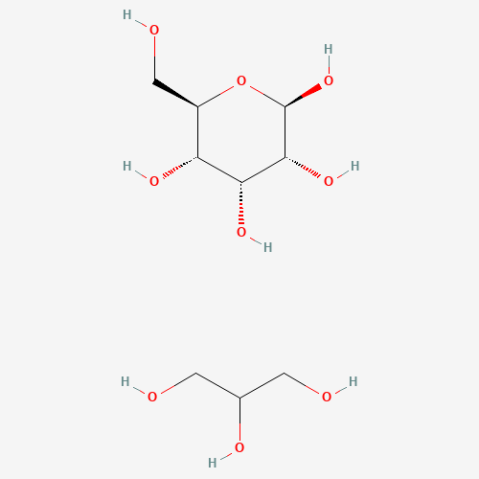Sephadex G-25 |
| Catalog No.GD21328 |
Products are for research use only. Not for human use. We do not sell to patients.

Cas No.: 9041-35-4
Sample solution is provided at 25 µL, 10mM.
Guidelines (Following is our recommended protocol. This protocol only provides a guideline, and should be modified according to your specific needs).
1. Swelling: The dry rubber particles need to be swelled for the first time. Place in excess deionized water and swell at room temperature for 3 h, or in a 90掳C water bath for 1 h. (forbid to use magnetic stirring during the swelling process to avoid breaking the microspheres)
2. Column packing:
(1) Prepare initial buffer (equilibrium solution) and elution buffer according to the properties of the samples to be separated. In the case of desalting proteins such as proteins, it is generally recommended to use only one buffer with a low salt concentration for sample loading, equilibration and elution in gel chromatography. For example, 50 mM Tris-hydrochloric acid or PBS buffer near neutral; if it is the separation of peptides, 0.15 M NaCl can be appropriately added to shield the interaction between the target and the gel; if it is buffer exchange, select the target buffer as needed.
(2) Drain the gel, prepare a homogenate with initial buffer (at the ratio of gel:buffer = 3:1) and degas.
(3) Fix the column vertically, wet the bottom end with water or buffer and keep the liquid level for a period.
(4) Guide the homogenate with a glass rod and pour it into the column at one time along the inner wall of the column to allow the gel to settle freely in the column, seal the column with water, and settle overnight.
(5) Connect the movable column head at the top of the column, turn on the peristaltic pump, use the operating flow rate to let the buffer flow through 5 times the column volume, and then use 1.5 times the operating flow rate to flow through 5 times the column volume, and adjust the adapter head to make it as close as possible. Finally, equilibrate the column with 2-3 column volumes of buffer.
Note: Air bubbles cannot be introduced during all operations to ensure the uniformity of the gel.
3. Equilibration: Equilibrate the column with the equilibration buffer at the operating flow rate, and observe the change of the detector until the parameters such as conductivity and pH remain unchanged.
4. Loading: switch the switching valve to load the sample, and the sample load is selected according to the nature of the sample and the amount of the chromatography medium. Generally speaking, the sample load does not exceed 25% of the column bed volume. The samples were prepared with equilibration solution and pretreated by filtration with 0.45 渭m microporous membrane.
5. Elution: Switch to elution buffer for constant elution, after peaking, to baseline equilibrium.
6. Regeneration: wash with 0.2 mol/L NaOH or non-ionic detergent for 2 times the column volume; then rinse with deionized water for 3-5 times the column volume.
7. Storage: After use, replace the mobile phase with 20% ethanol and store in a refrigerator at 4掳C.
8. In order to obtain a better desalination effect, it is recommended to keep the column heights of different particle sizes at: 30 cm and above for coarse particles, 20 cm and above for medium particles, 10 cm and above for fine particles, 5 cm and above for ultra-fine particles, and The smaller the particle size, the higher the resolution and the slower the flow rate.
9. The amount of sample added should be determined according to the experiment. Generally, the maximum sample load does not exceed 30% of the column bed volume, and 10-20% is the best sample load.
[1]. Saul A, et al. A rapid method of concentrating proteins in small volumes with high recovery using Sephadex G-25. Anal Biochem. 1984 May 1;138(2):451-3.
Average Rating: 5 (Based on Reviews and 30 reference(s) in Google Scholar.)
GLPBIO products are for RESEARCH USE ONLY. Please make sure your review or question is research based.
Required fields are marked with *



















